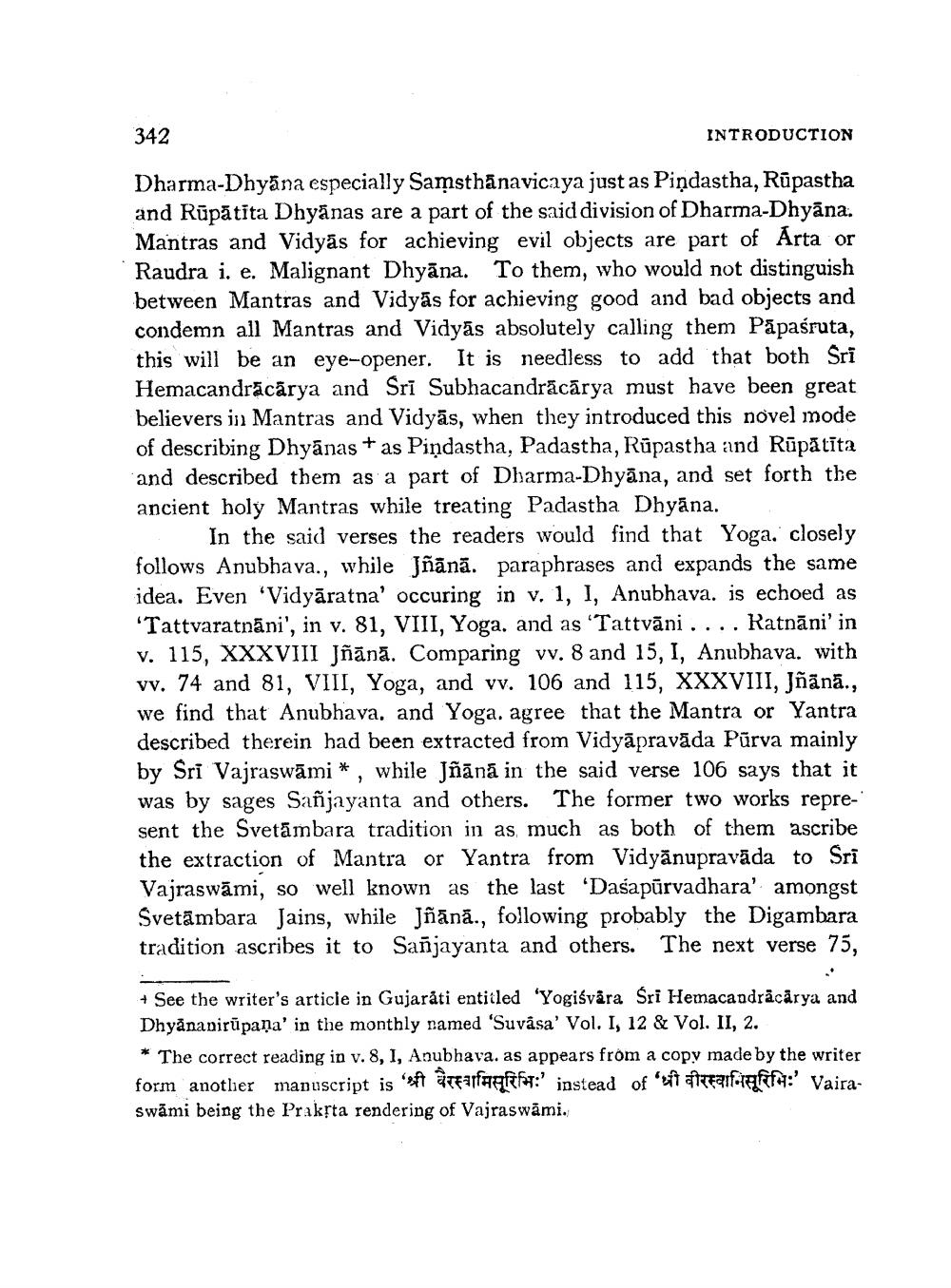________________
342
INTRODUCTION
Dharma-Dhyana especially Samsthānavicaya just as Pindastha, Rūpastha and Rūpātīta Dhyanas are a part of the said division of Dharma-Dhyana. Mantras and Vidyas for achieving evil objects are part of Arta or Raudra i. e. Malignant Dhyana. To them, who would not distinguish between Mantras and Vidyas for achieving good and bad objects and condemn all Mantras and Vidyas absolutely calling them Papaśruta, this will be an eye-opener. It is needless to add that both Sri Hemacandracārya and Sri Subhacandrācārya must have been great believers in Mantras and Vidyas, when they introduced this novel mode of describing Dhyānas as Pindastha, Padastha, Rūpastha and Rūpātīta and described them as a part of Dharma-Dhyana, and set forth the ancient holy Mantras while treating Padastha Dhyana.
+
In the said verses the readers would find that Yoga. closely follows Anubhava., while Jñānā. paraphrases and expands the same idea. Even 'Vidyaratna' occuring in v. 1, 1, Anubhava. is echoed as 'Tattvaratnani', in v. 81, VIII, Yoga. and as "Tattvāni. . . . Ratnani' in v. 115, XXXVIII Jñānā. Comparing vv. 8 and 15, I, Anubhava. with vv. 74 and 81, VIII, Yoga, and vv. 106 and 115, XXXVIII, Jñānā., we find that Anubhava. and Yoga. agree that the Mantra or Yantra described therein had been extracted from Vidyāpravāda Pūrva mainly by Sri Vajraswami *, while Jñānā in the said verse 106 says that it was by sages Sañjayanta and others. The former two works repre-1 sent the Svetambara tradition in as much as both of them ascribe the extraction of Mantra or Yantra from Vidyanupravāda to Sri Vajraswami, so well known as the last 'Dasapūrvadhara' amongst Svetambara Jains, while Jñānā., following probably the Digambara tradition ascribes it to Sanjayanta and others. The next verse 75,
+ See the writer's article in Gujarati entitled 'Yogiśvāra Śri Hemacandrācārya and Dhyananirupaṇa' in the monthly named 'Suvâsa' Vol. I, 12 & Vol. II, 2.
* The correct reading in v. 8, 1, Anubhava. as appears from a copy made by the writer form another_manuscript is 'श्री वैरस्वामिसूरिभि:' instead of 'श्री वीरस्वानिसूरिभि:' Vaira swami being the Prakṛta rendering of Vajraswami.




